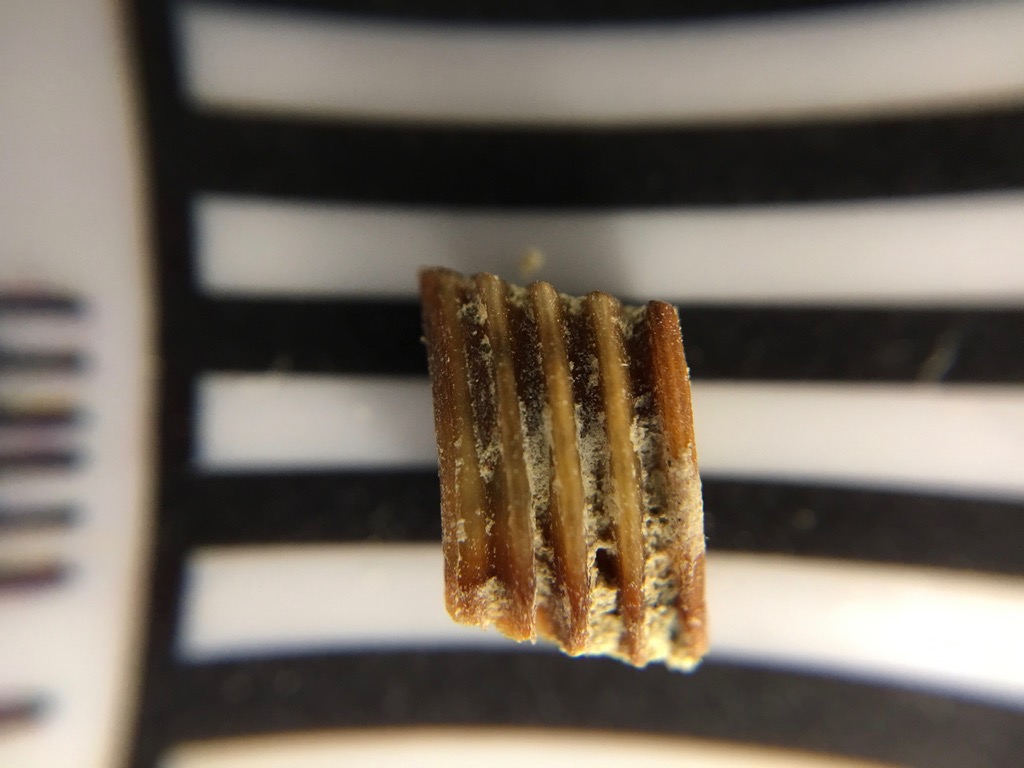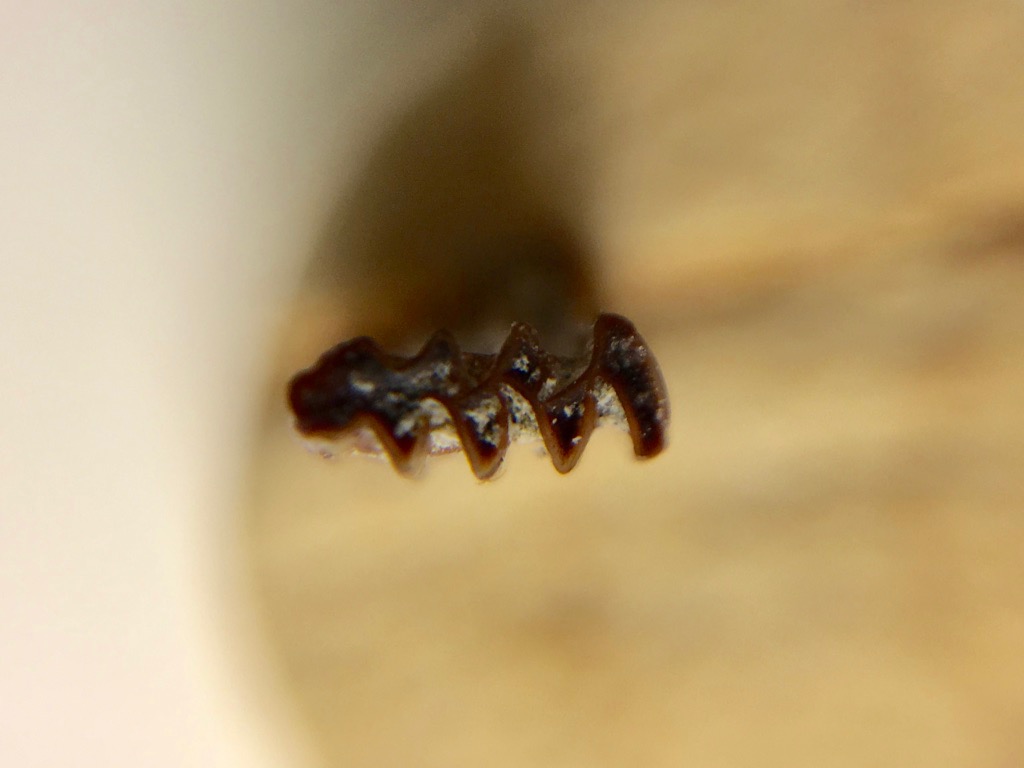 This week is National Rodent Awareness Week. Fossil rodents may not get a lot of headlines, but they are often the most common vertebrate fossils in Neogene terrestrial deposits, and have the potential to convey huge amounts of information about age and paleoenvironment.One of the larger collections at the Western Science Center is from the Southern California Edison El Casco substation in Riverside County. These Late Pliocene/Early Pleistocene deposits of the San Timoteo Formation produced over 16,000 fossils, including large numbers of rodents.Shown above is the right lower first molar of Microtus, a vole. It's shown in medial view, with anterior to the left. The black and white bands under the tooth are each 1 mm thick, so the whole tooth is about 4 mm tall.Voles and other members of the subfamily Arvicolinae (including hamsters, lemmings, and muskrats) are herbivores, and often eat abrasive food such as grasses. Like many other herbivores, this is reflected in their tooth anatomy, which includes loops of enamel with exposed dentine in the middle. Because the enamel is harder than the dentine, it always sticks up a bit higher than the dentine and allows the tooth to stay sharp even as it wears down. The enamel loops are expressed as ridges or columns when seen from the side, and are clearly visible in the view above. In occlusal view (below), the loops are expressed as a series of alternating triangles, a pattern that is characteristic of the arvicolines.
This week is National Rodent Awareness Week. Fossil rodents may not get a lot of headlines, but they are often the most common vertebrate fossils in Neogene terrestrial deposits, and have the potential to convey huge amounts of information about age and paleoenvironment.One of the larger collections at the Western Science Center is from the Southern California Edison El Casco substation in Riverside County. These Late Pliocene/Early Pleistocene deposits of the San Timoteo Formation produced over 16,000 fossils, including large numbers of rodents.Shown above is the right lower first molar of Microtus, a vole. It's shown in medial view, with anterior to the left. The black and white bands under the tooth are each 1 mm thick, so the whole tooth is about 4 mm tall.Voles and other members of the subfamily Arvicolinae (including hamsters, lemmings, and muskrats) are herbivores, and often eat abrasive food such as grasses. Like many other herbivores, this is reflected in their tooth anatomy, which includes loops of enamel with exposed dentine in the middle. Because the enamel is harder than the dentine, it always sticks up a bit higher than the dentine and allows the tooth to stay sharp even as it wears down. The enamel loops are expressed as ridges or columns when seen from the side, and are clearly visible in the view above. In occlusal view (below), the loops are expressed as a series of alternating triangles, a pattern that is characteristic of the arvicolines.
